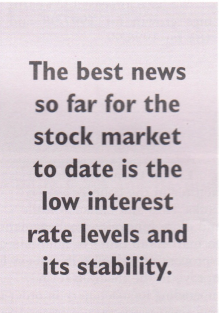Tyronne Devotta
The first quarter results for 1997 of quoted companies that have been trickling in so far have disappointed stock analysts. Most companies have not shown the expected growth figures, thereby causing fear among portions of the brokering community that the market would be on a back slide in the weeks to come.
In the past few weeks the market has seen a drop by about twenty points. TA Securities analyst Irfan Daruwase says, that if one is to go by the first quarter figures of some of these companies and take it as an indicative market sample ‘the growth is not enough to sustain the present levels of the market.”
An example could be seen in the NDB figures, a company supposed to be in line with the economic direction of the country showing a minus 12% growth in the quarter. Stock analysts are also not impressed with the figures shown by Commercial Bank, HNB and Seylan Bank.
Be that as it may, the best news so far for the stock market to date is the low interest rate levels and its stability. Market analysts say that the low interest rates on savings offered by commercial banks and the Treasury Bills dipping to around 10% levels will find some retailers coming into the stock market to invest. But retail buyers will have to be warned that short term gains on the prevailing conditions in the stock market are not possible. Stock market analysts indicate that any profit taking would be on the medium and long term.
Meanwhile the initial hoo-ha about the reduction in the Statutory Reserve Ratio (SRR) by 1% in January and by a further 2% in March of this year has fizzled out
the expected results have not significantly affected the lending rates. The local commercial banks have not been able to reduce their rates across-the-board due to the high cost of funds they maintain. This has resulted in a situation where there is excess liquidity in the market but no takers.
The excess liquidity in the market has caused the interest rates in the call money market and the treasury bill market to fall. A Jardine Fleming Research Report states that interest income from the statutory 20% liquid assets, which the banks have to maintain, has declined considerably in the past three months. Given their cost structure, the local commercial banks have not been able to reduce lending rates across-the- board, except Sampath Bank which has cut lending rates by 200 bp bringing the Prime Lending Rate (PLR) to 17.5%
‘The other three listed banks have reduced rates on a case-by- case basis on the request of corporate clients. They have also reduced deposit rates by 100-150 bp in a bid to preserve margins. The lending rate reduction has become necessary in order to compete with foreign banks operating in Colombo. The foreign banks have a low cost structure as they have few or no branches, hardly mobilize

deposits and obtain a large portion of their funds from the call market. Thus, low call market rates have allowed them to reduce their lending rates by 200-300 bp, forcing the local banks to compete.”
Faced with falling interest. mates, listed commercial banks have been forced to change. “We see the short terms as a difficult period for them given the problems they had in 1996 and be cause credit demand, other than working capital, has not increased. However, we expect the banks to reduce their lending rates across the board by at least 150-200 bp in the next six months. The commercial banks use the National Savings Bank (NSB) rate as a benchmark for long term deposit rates. The NSB rate having now been brought down to 12%, the banks will have better flexibility. Based on our assumption that the economy will improve and credit demand will pick up in the second half of 1997, we do not foresee the banks’ bottom lines being too badly affected. However, we feel it is still premature at this juncture to revise our earnings forecasts,’ says Jardine Fleming analysts.


